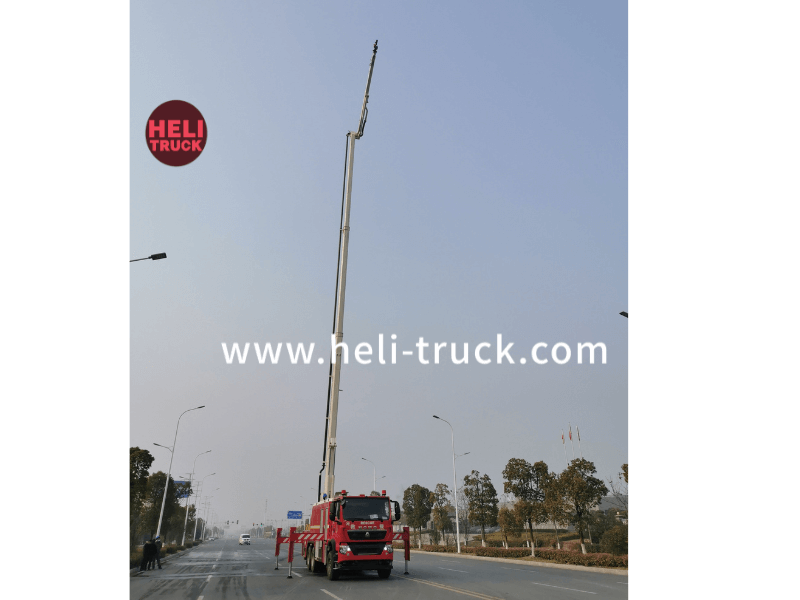Introduction

Work trucks have been an integral part of various industries for decades, providing essential transportation and carrying capacity for materials, tools, and equipment. The design of work trucks has evolved significantly over time, driven by advancements in technology, changing industry needs, and a focus on safety and efficiency. In this article, we will explore the evolution of work truck design, from its humble beginnings to the cutting-edge models of the future.
Historical Overview
The history of work trucks dates back to the early 20th century, when Ford introduced the Model T chassis with a custom-built cargo bed, marking the birth of the modern work truck. These early work trucks were basic in design, featuring simple cab and chassis configurations with limited cargo capacity. Over time, manufacturers began to develop specialized work truck models tailored to specific industries such as construction, agriculture, and utilities.
One of the key milestones in work truck design was the introduction of the pickup truck in the 1920s, which revolutionized the industry by offering a versatile and compact vehicle for both work and personal use. Pickup trucks quickly became popular among farmers, tradespeople, and small businesses, leading to further innovation in design and functionality.
As the demand for work trucks grew, manufacturers started to incorporate more advanced features such as improved suspension systems, power steering, and larger cargo capacities. The 1950s and 1960s saw the introduction of iconic work truck models such as the Ford F-Series and Chevrolet C/K series, which set the standard for durability, performance, and versatility in the industry.
Modern Trends and Innovations
In recent years, work truck design has been influenced by several key trends and innovations aimed at enhancing safety, efficiency, and sustainability. One of the most significant developments is the integration of advanced technology such as telematics, GPS tracking, and onboard diagnostics systems, which provide real-time data on vehicle performance, maintenance needs, and driver behavior.
go now in work truck design is the focus on fuel efficiency and emissions reduction. With increasing environmental concerns and stricter regulations, manufacturers are developing hybrid and electric work truck models that offer lower operating costs and reduced carbon emissions. Electric work trucks are particularly well-suited for urban environments where noise and air pollution are major concerns.
Furthermore, the rise of e-commerce and last-mile delivery services has led to the development of compact and agile work truck designs that can navigate congested city streets and deliver goods efficiently. These urban work trucks often feature cargo vans or light-duty trucks with customizable interiors and advanced safety features to meet the demands of modern delivery operations.
Safety and Ergonomics
Safety has always been a top priority in work truck design, with manufacturers continuously improving vehicle construction, crashworthiness, and driver assistance systems to protect occupants and prevent accidents. Modern work trucks are equipped with features such as antilock brakes, stability control, and advanced airbag systems to enhance occupant protection in the event of a collision.
In addition to safety, ergonomics play a crucial role in work truck design, as drivers spend long hours behind the wheel and need a comfortable and functional workspace. Manufacturers are incorporating adjustable seats, steering wheels, and controls to accommodate drivers of all sizes and reduce fatigue during long shifts. Enhanced visibility through larger windows and mirrors also contributes to safer and more efficient operation of work trucks.
Customization and Versatility
One of the key advantages of work trucks is their versatility and ability to be customized to meet specific industry requirements. Manufacturers offer a wide range of options for cab styles, bed lengths, payload capacities, and powertrain configurations to tailor work trucks to different applications such as towing, hauling, and off-road use.
Customization options also extend to specialized equipment and accessories such as toolboxes, ladder racks, and cargo management systems that enhance productivity and organization for work truck users. Manufacturers work closely with customers to understand their unique needs and develop customized solutions that optimize performance and efficiency in various work environments.
Future Outlook
Looking ahead, the future of work truck design is expected to be shaped by advancements in autonomous technology, connectivity, and alternative powertrains. Autonomous work trucks equipped with sensors, cameras, and AI algorithms will revolutionize the industry by offering driverless operation for tasks such as material handling, delivery, and maintenance.
Connectivity features such as vehicle-to-vehicle communication and cloud-based data sharing will enable fleet managers to monitor and optimize work truck performance in real-time, leading to improved efficiency and uptime. Moreover, the adoption of hydrogen fuel cells, renewable fuels, and other alternative power sources will further reduce emissions and dependence on fossil fuels in the work truck sector.
In conclusion, the evolution of work truck design has been driven by a combination of historical developments, modern trends, and future innovations aimed at enhancing safety, efficiency, and sustainability. Manufacturers continue to push the boundaries of design and technology to meet the evolving needs of industries such as construction, transportation, and logistics, ensuring that work trucks remain essential tools for businesses around the world.
